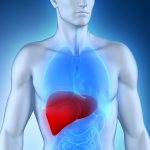
Teen boys who are unfit and/or obese have higher odds for chronic disease and disability as adults, according to a large Swedish study. Researchers followed more than 1 million boys for an average of 28 years, starting when they were 16 to 19 years of age. Those who were inactive, obese or both as teens were more likely to receive medical disability pensions as adults. The pensions are granted in some countries to working-aged adults who are unable to work due to chronic illness or injury. “Cardiorespiratory fitness and obesity already in adolescence is strongly related to later health,” said lead researcher Pontus Henriksson, a registered dietitian at the Karolinska Institute in Huddinge, Sweden. His team cautioned that this study does not prove that being unfit or obese as a teenager causes disabilities in adulthood, only that the two appear to be related. This association, however, is important because many teens are less fit and weigh more than previous generations, Henriksson said. The study also provides more evidence for the relevance of fitness and obesity in adolescence as markers of future health. Morbidly obese men were at greatest risk, the study found. Henriksson and his colleagues also found that compared with being unfit, being moderately or highly fit was related to a reduced risk for disability, whether one was obese or not. Common disabilities associated… read on >





































